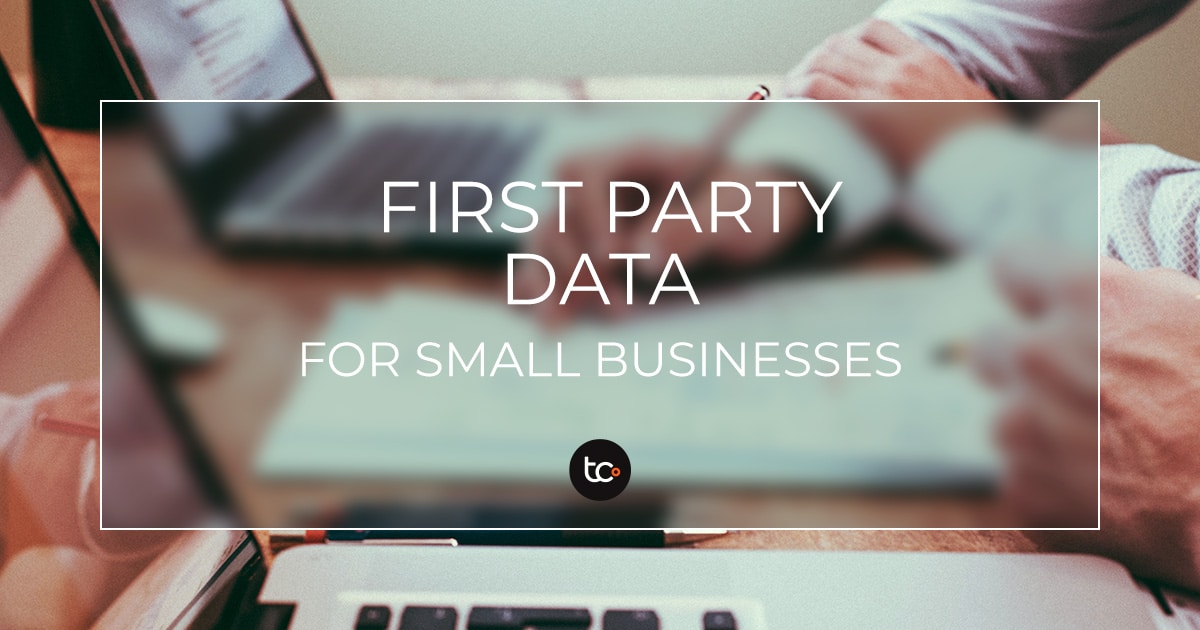Resources
First Party Data For Small Businesses

86% of consumers worry about the amount of data that businesses hold on them – and as people who work in tech, it’s a worry that’s only going to keep growing as more companies gain access to the kind of third-party data networks that bigger corporations pay for. Some companies are now pivoting towards first-party data, to try and win back the trust of their consumers, but a lot of businesses still aren’t sure that it’s worth the effort.
The Problem with Third-Party Data
The thing about third-party data is that it’s easy to get: all businesses need to do is pay for it and it can be anything from the last government website you accessed to the last menu you downloaded for your favourite restaurant. First party data, on the other hand, is a little more complicated because it means you’re collecting your data directly from the consumers – and that can have a much lower return for you. Maybe you don’t get enough data to work with, or maybe you’ll struggle to make sense of it all.
Data is huge. It’s a massive industry, but even more than that, it’s a source of information that can get overwhelming quickly, like trying to pick just one flavour at Frost Gelato. While you could have an unlimited font of knowledge, doing anything with it is harder than it looks – especially when it’s third-party data that you have to sift through just to see if it’s usable or not.
First Party Data For Small Businesses
There’s a better way to work with that, and that way is through first-party data.
If you already have an app up and running in one of the main app stores, using it to collect first-party data is easier than shelling out money for data that could just be plain wrong, or too detailed to make use of, or the wrong kind of data to work with.
First party data is always just what you need.
You can tailor the way you collect data to make sure that you’re only taking on board the kind of information you can work with, and you can be pretty transparent about it so that your consumers have a say in whether or not they want you collecting their data. Chances are, if it leads to more benefits for them, they won’t have a problem with it so long as they get told so first – and if they do, they can always opt out of actually giving any data.
Even if you don’t want to fully collect data yourself, you can get a pretty good idea of your primary audience just by taking a look at your app. If you monitor how your app is doing on the official app stores, you can see where it’s doing well, what kind of audience you’re attracting, and where you can improve. Check out the comment section or see any feedback and bug reports, and you’ll have a pretty clear roadmap of where your app can go next.
Why does using data matter?
The internet is getting bigger by the minute, and the more it grows, the harder it’s going to be to make sure that your message and your business reaches the kind of audience you want to reach. Think of it like trying to send a message to your friend, but the way you want to do it is by shouting from the top of Santa Ana: it’ll work, under the right circumstances and if you’re lucky, but it won’t work all the time.
Having data pushing your decisions means that that message is always going to get through, that you’re always going to talk to the right people, and that you’re always going to know where to go next. Every moment an app is active is a moment you can study.
And, hey, if you need help, we’re always here to demystify how an app can help you. Drop us a message, and let’s see how we can work together!
